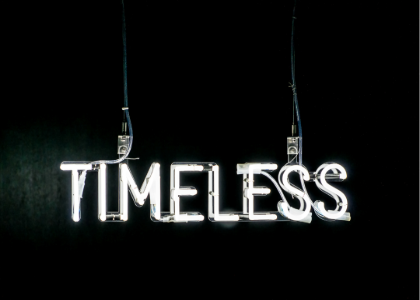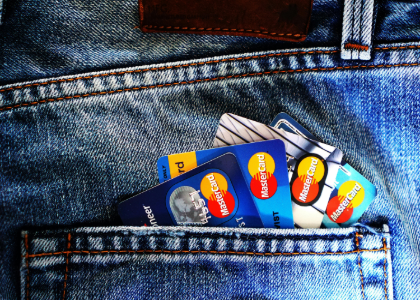Blog

Complete Rebrand or Refresh: What Is Best for Your Old Logo?
We all know that branding is crucial to a business. It is the front porch of your business - the one your customers see before knowing its true character, quality, and skills. Both well-established and young startups need to narrate the story of their evolution and the passion for delivering something unique to the customers.
Though branding goes beyond just creating a logo, it is an essential element to the whole piece. It is a detailed exercise that involves the following;
Creating and narrating multiple versions of a story
Simplifying its tone of voice
Packaging it in appealing colors
Building an emblem in the form of a logo to remember it by
Conveying this achievement to consumers at the right place and time
Brands need to evolve to stay relevant and relatable to their consumers constantly. If they aren’t evolving, they risk being outdated and irrelevant. It is a risk that may make a business stagnant in a developing market. Some renowned brands such as Apple and Microsoft have undergone a logo rebrand and a refresh in their lifespan.
The difference between logo rebrand and logo refresh needs to be clarified. Though the two terms may seem very similar, they are as different as night and day. In detail below, let’s understand the difference between a complete rebrand and a refresh.
Defining rebrand and refresh
Rebranding is a complex process that endeavors to change the image of your business. It is undertaken when your business is targeting a new market. Also, when you think your current brand or business offerings are no more doing the job effectively. A complete rebrand is necessary when the companies undergo a merger or when they enter a new industry. A rebranding includes building a new narrative for the business, a new look, and a new logo identity.
A brand refresh is not a fundamental change but a cosmetic enhancement to the business. It mainly focuses on the appearance of your logo, color scheme, and placement of mnemonic together. These changes are visual. A brand refresh is considered when the business is relevant in the market but may need to upgrade its appearance. Businesses that want to be more relatable choose to refresh their branding. This upgrade preserves the brand's integrity while reaching a wider audience. A refresh exercise includes upgrading the brand tagline, tweaking the logo, and other marketing collaterals.
The difference between a complete rebrand and a refresh
People often need clarification on complete rebranding and refreshing. Even in its simplest form, rebranding is an exhaustive exercise conducted to launch something new or reach out to a new set of audiences. A refresh is a minor tweaking of the logo and other marketing materials to suit the trends.
A complete brand rebranding exercise may include the following;
Building a new narrative for your business and its source of emergence
Creating a new personality that has never been portrayed before
Developing a new brand guideline with a logo and other branding materials
Speaking in a new tone of voice that appeals to a new set of audiences
Using a new color scheme that is relevant and attractive to the market
Overhauling your entire pre-established image
Communicating this change to the loyal, new, and broader audiences
Higher spending compared to a refresh
One of the best examples of a complete logo rebrand is Airbnb. They changed their market perspective from a bed-sharing website to a travel experience partner. Their philosophy of believing in people, places, and love is reflected strongly in their logo. The freshly introduced logo was aesthetically classy and helped change the entire organization's market perspective.
A brand refresh may include the following;
Tweaking your existing logo with a new color, font, or design
Updating the tagline that keeps up with the trend
Updating the color palette while keeping primary colors as is
Using a new font to give the logo and marketing collaterals better readability
Updating the marketing materials with the new logo and branding elements
Lower spending compared to a rebrand
A great example of a brand refresh is Netflix. They changed just their font and color scheme to highlight the updated approach of the organization. Their old logo reflected the 90’s era with a flat, boxy, and drop shadow design. While keeping the name intact, the new logo is a play with just the font and color. The company adopted a simple, easily readable font in a curve, representing the original television screens of the early era. Netflix undertook this refresh to highlight services and technology updates and appeal to a broader set of audiences.
Top questions to ask before considering logo rebrand or refresh
Companies are often in a dilemma of whether they should carry out a brand refresh or complete rebranding. Asking yourself these simple questions may help you find the best solution for your business.
Do you think your logo is outdated?
This question is the most straightforward yet most important one to ask yourself. If you established your business in the 80s and still use the same logo, it’s time to change it. A new logo can help build relatability with your ever-evolving consumers, showcase expanded services, and be firmly compatible with today’s digital devices. Websites like FreeLogoDesign.org can help you create a new logo within minutes. You can create a new logo with the advanced design toolkit offered on this website. It also has a team of design partners who exclusively cater to custom logo designing for organizations and individuals.
Has your business expanded or changed?
If your business has entered a new line of work, it’s time to consider a new logo. Your brand messaging reflects your new personality and offerings most accurately. When you think of long-term goals and the evolution of your brand ten years or more down the line, your logo may have been outdated by then. You should introduce a new logo to help you embrace your brand's new-age, futuristic aspect.
Do you feel intimidated by the new competition in the market?
Competition can be intimidating. It may be challenging to be at the top of your game always. A new logo can sort this situation. When a brand creates a new logo, it raises market expectations with a new promise — a promise to constantly evolve and provide beyond the regular mandate under which the brand was previously perceived. A courageous brand is more trustworthy.
Are you speaking with a new set of audiences?
In this digital age, audiences are ever-evolving. Therefore, a brand must make the audiences feel constantly connected. You can establish this connection through a branding exercise that appeals to the new audience. This change can concern a new logo, color scheme, or tone of voice. One also needs to remember the spectrum of marketing collaterals beyond regular ATL mandates, such as websites, digital ads, and social media.
Have your brand’s values or mission statement changed?
Evolution is core to any growing business. When a business is founded, it may be created, keeping the sentiments of the founder and the market at a particular time. With experience and exposure, a brand’s evolution story may also evolve to suit a new line of thinking. This thinking can be a new set of values, vision, and mission statements. A new logo must reflect these changes, and a tagline that communicates exactly what your consumers want to feel, think and do.
How to avoid bad branding?
If you believe lousy brand reputation travels faster, bad branding exceeds the speed limit. Running a successful business is equivalent to establishing a great brand identity. Often, businesses prioritize acquisition, sales, and costs over branding. In such times, the exercise of branding hits the back burner.
Branding should extend beyond a mere logo upgrade. It involves clarity of thought that streams into a robust strategy based on logic and research. Here are a few pointers that can help you avoid blunders when it comes to branding;
The significance of a logo
The logo is the heart of your brand. A weak logo fails to associate with the business at just a glance. Websites like FreeLogoDesign.org can help you strategize your logo and custom-create one with the help of its tools and experts.
Disconnect from the business
Branding must reflect the story, values, and mission of a business. It is lousy branding if your brand strays from associating with any of these.
Being generic
The essence of a strong brand is its individuality. Ensure to bring out your USPs in branding. Though unique is good, it is safe to stay uncomplicated and easily understood.
Importance of trademarks
Trademarks help safeguard your brand identity. When clubbed with copyright, it double proofs your brand from misuse. A trademark helps artists and businesses protect their work from intellectual theft and misuse.
Why is a complete rebranding better than a refresh?
A complete rebrand allows a business to start on a fresh slate. It gives you the power to create a new beginning for your business and a new perspective in the market. Compared to a refresh that allows minor or sometimes even unnoticeable changes in your logo, a rebrand means creating an entirely new brand identity. A rebrand is often considered when your business is merged or acquired. It is also considered when your business is entering a new market, reaching a new audience, or creating a new line of offerings.
A complete rebrand can be exponentially beneficial to your business. With a new positioning, you can reach out to a broader set of audiences and build a strong connection. It allows the brand to gain a more loyal customer base. A fresh new look also allows a brand to increase its pricing. Also, these premiums increase the market value of a brand profitable to the business and its stakeholders.
There are two types of complete rebranding:
Reactive rebranding:
This rebranding exercise is a reaction to an immediate situation. Bad publicity, a merger or acquisition, and a trademark or copyright law violation can trigger this reaction from brands.
Proactive rebranding;
Proactive rebranding is when a company anticipates changes and prepares for the future. It results from solid research, strategy, philosophy, logo, and other branding materials.
Next steps after logo rebranding
Now that you have rebranded your logo, what next?
The next step is shifting your brand positioning to appeal to the target audience. You can carry out this shift by developing a strong message that communicates your business’s values, vision, and mission.
After setting a clear line of communication, you need to do what is the most obvious - checking that everything is on-brand. You must cross-check every marketing collateral and ensure that it accurately matches the selected color scheme, font size, tone of voice, and logo positioning.
What is also important is the compatibility of the logo. You must probe if the logo is easily adaptable on digital and offline platforms. Are there any platform-friendly versions in which a logo needs to be created, such as colored background, icon exaggeration, etc.?
Lastly, make a big deal out of your rebrand exercise. A rebranding is a new chapter in your business, so don’t forget to share this thrill with others. For internal stakeholders, host a celebratory announcement that involves giving brand new stationeries. For external stakeholders such as clients, a great corporate gift with the new brand’s elements can be customized and given. An email to all the parties is a must to ensure a strong recall.
Research is vital in ensuring that you are on the right path. By exposing your new logo and identity to a smaller group of individuals, you can glean insights into how your potential target audience will react. Whenever you notice that your efforts are not appreciated by the smaller audience set, investigate to find out the exact reason. Improvise what you have created and change it dynamically before testing it again.
As time passes, you will see how customers accept your new brand.
More tips and tricks on the blog


